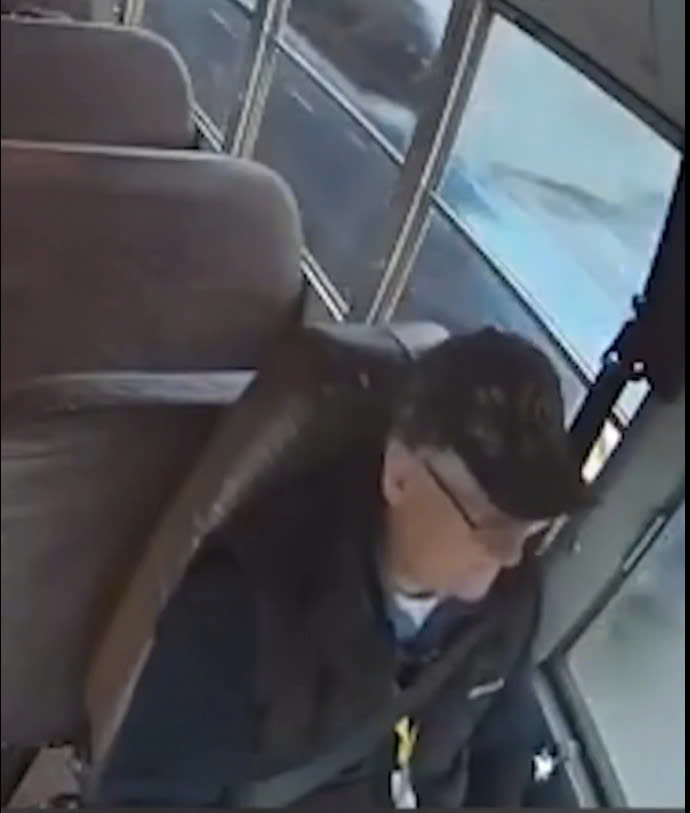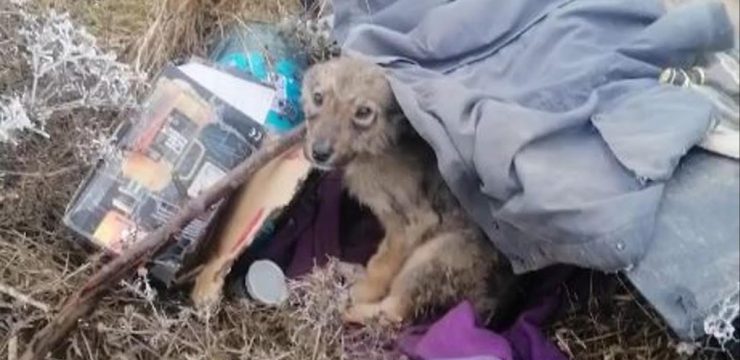It began as an ordinary morning filled with laughter, chatter, and the steady rhythm of basketballs bouncing off the gym floor. The North Creek High School girls basketball team was on its way to an eagerly awaited game, the mood light and full of excitement. Students joked with one another, coaches reviewed strategies, and driver Stewart O’Leary kept his eyes on the road, guiding the familiar yellow bus down the highway toward Bellevue, Washington. Everything about the ride felt routine—until, in the span of a few seconds, that peaceful trip turned into a fight for survival that would reveal the quiet courage of everyone on board, especially O’Leary himself.

The bus glided smoothly along the highway, the hum of the engine blending with the soft buzz of conversation. Then, out of nowhere, a flash of metal streaked through the air. A deafening crash shattered the calm as a jagged piece of debris—believed to be part of a broken leaf spring or machinery from another vehicle—smashed through the windshield. The object struck O’Leary squarely in the chest, the impact sending shards of glass spraying across the front seats. For an instant, time seemed to freeze. The driver gasped, his body jarred by the blow, but somehow, his hands never left the steering wheel. In that split second, instinct and training took over.
Fighting through searing pain and shock, O’Leary gripped the wheel tighter and guided the bus toward the shoulder. The vehicle swerved slightly, but he maintained control, easing it to a steady, gradual stop. Coaches sitting near the front immediately jumped into action, rushing to check on the driver while calling out for the students to remain calm and seated. The players—some trembling, others crying quietly—did exactly as they were told. Within moments, what could have been a catastrophic multi-vehicle accident became a controlled emergency. The entire bus had been spared because one man refused to let panic take over.
When the bus came to a stop, silence hung in the air before the reality of what had happened sank in. The windshield was shattered, the dashboard covered in glass, and O’Leary’s shirt was streaked with blood from several cuts. Though breathing heavily, he remained conscious, his focus still on the safety of his passengers. Coaches dialed 911, and within minutes, emergency responders arrived. Paramedics quickly assessed the scene and rushed O’Leary to a nearby hospital. Miraculously, none of the students or staff sustained serious injuries. Doctors later confirmed that O’Leary had suffered severe bruising to his chest and minor lacerations but was incredibly lucky—the metal debris had missed his heart and lungs by inches.
Even as medics treated him, O’Leary’s first concern wasn’t his pain. Witnesses recalled him repeatedly asking about the students: “Are the kids okay?” he murmured again and again. That selflessness moved everyone who heard it. One parent later said with tears in her eyes, “He didn’t think of himself—he thought of those kids first. That’s what makes him a true hero.”
Investigators determined the debris likely came from a passing truck, though the exact source was never found. Authorities noted the incident highlighted a growing national safety issue: unsecured vehicle parts and road debris cause thousands of crashes across the United States each year. Many of them end in tragedy. This close call was a sobering reminder that even small lapses in vehicle maintenance can have devastating consequences.
In the days that followed, the Bellevue community rallied around O’Leary. Students, parents, and teachers sent cards, flowers, and heartfelt messages of gratitude. The school district released a statement praising his “professionalism and extraordinary calm under pressure.” Social media was filled with posts honoring him, calling his quick thinking an act of quiet heroism. One of the coaches later said, “It happened so fast. The glass exploded, and yet somehow he kept that bus steady. I still don’t know how he managed it.”
After a week of rest and recovery, O’Leary returned to work, humble as ever. When asked by reporters about the incident, he simply said, “I just did what anyone would do. My job is to make sure those kids get to school and back safely. That day, I just had to do it under tougher circumstances.” His words reflected the simple dignity of someone who sees heroism not as something extraordinary, but as part of doing one’s duty with heart and integrity.
Transportation experts later cited O’Leary’s case in safety training seminars, emphasizing the importance of composure and clear thinking during emergencies. While technical training covers how to handle vehicle malfunctions, O’Leary’s story demonstrated that mental readiness—the ability to stay calm when fear takes hold—can make the ultimate difference between disaster and survival.
The incident also reignited discussions about highway safety and accountability. Concerned citizens began advocating for stricter inspection rules for trucks and trailers, calling on state lawmakers to ensure that every vehicle on the road met higher safety standards. In Olympia, legislators referenced the North Creek bus accident as an example of why stronger enforcement was necessary to protect both professional drivers and everyday commuters.
For the girls on the basketball team, that day left a lasting impression. Many said they had never realized how much they took safety for granted until they watched their driver risk his life to protect them. Team captain Emily Sanders later shared, “He saved our lives. Every time we step on that bus now, we know who’s behind the wheel—and we’ll never forget what he did for us.” The team played their next game the following week and dedicated their victory to him, presenting O’Leary with a signed basketball as a symbol of gratitude.
Though the metal debris incident could easily have ended in heartbreak, it instead became a story of courage, composure, and human decency. Stewart O’Leary turned chaos into calm and fear into focus. His steady hands not only kept a bus full of students safe but also reminded everyone in his community that heroism often comes from ordinary people making extraordinary choices in moments that count.
The road that morning may have tested his strength, but it also revealed something extraordinary—the power of courage guided by compassion. His bravery stands as a reminder that safety isn’t just about machines and maintenance; it’s about the people who take responsibility when everything is on the line.
In the end, this story is more than a near-miss—it’s a testament to grace under pressure, the value of vigilance, and the profound impact one person can have through selflessness. True heroes don’t always wear uniforms or badges. Sometimes, they drive a yellow school bus, greeting students with a smile, and when fate intervenes, they summon the quiet strength to protect every life in their care.





